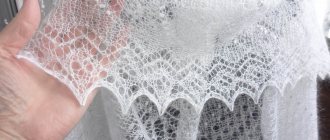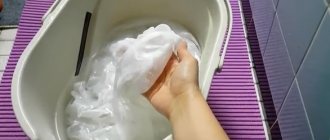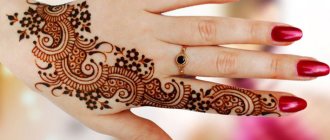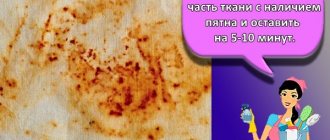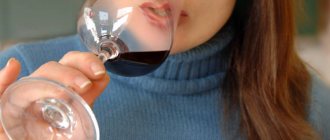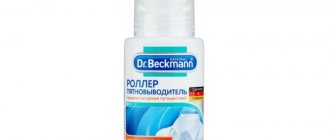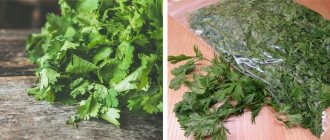The white coat is the work clothes of doctors, nurses, pharmacy workers and everyone who is somehow connected with medicine. Constant contact with people obliges medical personnel to look impeccable, and the success of a doctor or nurse is largely determined by the whiteness of his coat. Unfortunately, like any light-colored clothing, a white robe sooner or later loses its appearance. 7 simple methods available to anyone at home will help you restore the whiteness of your work clothes.
Method No. 1. Ammonia and hydrogen peroxide
The simplest and most effective method known to any medical student. In order to bleach a robe, you only need two ingredients: ammonia and hydrogen peroxide. You can purchase these ingredients at any pharmacy or specialty medical equipment store.
To whiten, the robe is placed in water with the addition of 6 tablespoons of ammonia and 5 teaspoons of hydrogen peroxide (per 10 liters of water). The holding time should not be more than 2 hours. Hydrogen peroxide in this combination allows you to evenly whiten medical clothing, and ammonia prevents the appearance of yellow spots on the fabric. Also, ammonia slightly softens tap water, which greatly facilitates the process of bleaching things.
Advice
For severe contamination, add 1 tablespoon of turpentine to the water.
How to remove marks from a ballpoint?
First, let's look at how to remove ballpoint pen marks from jeans.
Available means
Using improvised means helps out in cases where there are no special stain removers. If you find a mark from a ballpoint pen on your clothing, you can use:
- salt,
- alcohol,
- acetone,
- laundry soap,
- soda or ammonia.
The main thing is to choose the right proportions so as not to irreversibly damage the clothes.
Acetone and alcohol
To eliminate paste marks, you need to mix the two components in equal parts. Then you can start removing the contamination:
- Using a toothbrush, apply the mixture to the stain.
- Rub from edges to center.
- Leave for 3-5 minutes.
- Wash the product.
If the stain is old, then before applying the alcohol-acetone mixture, it is recommended to iron the problem area so that the stain is hot during treatment.
Alcohol and salt
If there are no stain removers in the house, you can use a mixture of alcohol and salt:
- Apply a little alcohol to the mark of the pen;
- Sprinkle salt on the moistened area (fine salt is fine);
- leave until the salt crystals dry completely;
- brush the surface;
- wash the denim item in the usual way.
After drying, you can repeat the procedure.
Ammonia and glycerin
A mixture of glycerin and ammonia can be used on any shade of the product. To clean you need:
- Mix glycerin with ammonia in a ratio of 2 to 1.
- Apply the mixture to the contaminated area.
- Leave for 20-30 minutes.
- Wash the product.
For white items, you can add hydrogen peroxide to the mixture at the rate of 0.5 parts to one part of the total finished mass.
Soda and ammonia
If there is a small trace of paste on your jeans, you can remove it with a mixture of ammonia and soda. To do this you need:
- make a paste from the ingredients (1 teaspoon of soda and 1 teaspoon of ammonia);
- treat the problem area;
- leave for 20-25 minutes;
- rinse with cold water;
- wash.
It needs to be applied precisely. Possible whitening effect.
Laundry soap
Grate laundry soap (you can use dishwashing detergent) and soak. It should have the consistency of sour cream.
Treat the stain with this mixture, rubbing the mixture into the jeans with a brush. Wash at 30 degrees.
Hydrogen peroxide
Hydrogen peroxide is best for removing stains on white denim. To do this you need:
- Spread the soiled item on a hard surface.
- Place a piece of white cloth under the stain.
- Pour some peroxide onto the pen mark.
- Wait 2-3 minutes.
- Rinse with water.
- Wash.
If the stain is old, it is better to apply peroxide on a cotton swab and apply it to the problem area, wait until the disc dries, and wash the jeans.
How to remove it with chemicals?
Chemical products are designed to combat different types of stains on different fabrics and colors. Therefore, they need to be selected taking into account the characteristics of the damaged item.
Vanish
The manufacturer produces compounds that remove stains on white and colored items. Detailed instructions for use are indicated on each of these products. It must be strictly adhered to so as not to damage the product.
The principle of application and influence of these products is similar:
- Apply liquid or powder, diluted to a paste, onto the stain.
- Leave for 15 minutes.
- Soak the denim item in cold water.
- Wash at 30-40 degrees.
Prices:
- concentrate with spray for colored and white items – from 490 rubles;
- oxygen powder for all colors – from 500 rubles;
- oxygen gel – from 200 rubles;
- gel for white – from 170 rub.
When using stain remover, do not increase the time. The product will continue to work during soaking and washing.
Amway
To remove traces of a ballpoint pen, you need to apply the selected composition to the stain and wait for the time indicated on the package. The manufacturer recommends using several products simultaneously to remove stubborn stains:
- You need to apply a stain pre-removal spray to the problem area. Put it in the wash.
- Add concentrated liquid laundry detergent to the machine. Wash at a suitable temperature.
The cost of the Amway spray is 740 rubles, the liquid product is 1465 rubles.
White
Whiteness copes well with marks from a ballpoint pen. But it can only be used on white products. To remove dirt, you need to treat it with a small amount of bleach, leave for 5-7 minutes and wash.
Method No. 2. Hydrogen peroxide, alcohol and regular powder
Another effective scheme that allows you to bleach a medical gown at home. This method is suitable for bleaching clothes containing synthetic fabric. The main thing is not to overdo it, otherwise the white coat may be seriously damaged by interaction with chemically active substances.
We recommend: How to properly wash Roman blinds?
To prepare the bleach solution you will need:
- 10 liters of warm water (not higher than 40 °C);
- hydrogen peroxide 3% (3-4 tablespoons);
- ammonia (1 tbsp);
- table salt (6 tablespoons);
- washing powder (50 g).
Medical clothing is immersed in the solution for 20-30 minutes, after which it is thoroughly rinsed in cold water. For heavily soiled items, you can additionally wash the items after soaking.
Whitening cotton laundry
Cotton is the most unpretentious material and the easiest to lighten. This is due to its structure. Due to their vegetable origin, the fibers are easy to dye, and the natural color of cotton is white. There are three effective ways to quickly bleach a cotton bra at home. They work great not only for bras, but also for panties and other products made from this material, so housewives should definitely take them into service.
The recipes are based on several available components:
- chlorine;
- blue;
- boiling water.
They differ in the way the product is processed, so we will consider each of them separately.
Digestion
Boiling cotton clothes is a “grandmother’s” method that may seem outdated, but its effectiveness has been proven by more than one housewife. Until now, many women boil linen, bed sheets, towels and other household textiles to return them to their former whiteness.
The secret of this method is simple, but you will need some auxiliary equipment:
- enamel pan or any other container;
- white towel or cloth;
- wooden spatula for stirring;
- a piece of laundry soap.
Next, follow the instructions:
- cover the bottom of the container with a cloth;
- pour about 2/3 of water into it and place on low heat;
- rub 1/2 bar of soap and lather it with a spatula;
- bring the soap solution to a boil and place the product in it;
- boil it for 25-30 minutes, stirring with a spatula;
- After the allotted time has passed, remove the item from the container and rinse under cold running water.
If the bra is old and the yellowness does not go away after boiling, you can repeat the procedure by adding ammonia to the soap solution in a proportion of 1 tsp. products for 10 liters of water. Never boil a bra with silicone straps. They may melt during heat treatment. It is better to remove them in advance so that they do not spoil the laundry.
Soak
For those who are afraid of ruining their underwear by boiling or doubt the result, there are ways to bleach a bra without boiling. One of them is soaking in white. This method is suitable for removing traces of sweat, yellowness and stains. The recipe is as simple as the previous one, but also has its own characteristics. For the procedure you will need a chemical bleach, such as “Whiteness”. The product is sold in any household chemical store and costs a penny. It contains chlorine, so you should avoid getting it on your skin and keep it away from children.
In addition to “Whiteness” you will need:
- 1 tbsp. l. hand washing powder;
- boiling water (3-5 l depending on the container);
- wooden spatula for stirring.
Whiteness is added in a ratio of 1:3, that is, 1 tbsp. l. products for 3 liters of water. Next follow the instructions:
- pour 3-5 liters of boiling water into a container;
- add powder and bleach, stir well with a spatula;
- load the laundry so that it is completely covered with water;
- leave for 30-40 minutes;
- After the specified time has passed, remove the bra and rinse it thoroughly.
Bleach effectively removes yellowness and stains, but thins the material, so it is better not to use this method often.
Using blue
The use of blueing is another popular folk method of whitening laundry, which has long been used by housewives. The recipe is budget-friendly, simple but effective.
Blue completely eliminates the gray tint, but it is important to know in what proportions to add it so that the fabric does not fade or turn blue. Another disadvantage of this method is that the product is not commercially available and cannot be bought in pharmacies as before.
However, it can be ordered on websites on the Internet or found in specialty household chemical stores.
This recipe only requires two ingredients: blue and water. Next, follow these steps:
- add a small amount of blue to warm water (the proportions are usually indicated on the product packaging);
- stir thoroughly until smooth so that no grains remain;
- dip the laundry in the solution and leave for 15-20 minutes;
- then take out the set and wash it by hand with soap or powder;
- rinse well several times under running water.
You can also do this in a machine on a delicate wash cycle. It is noteworthy that bluing is not able to remove stains, so for bleaching the bra must be clean.
Method No. 3. Lemon juice
A natural and affordable product that allows you to effortlessly whiten any white clothes at home. To prepare the solution, you need 2 medium-sized lemons and 10 liters of warm water. The robe is left in the basin overnight, after which it is rinsed thoroughly. It is worth remembering that this method does not allow you to cope with severe and long-standing stains on medical clothing.
Whitening rules
Bleaching things at home is the best way, but despite this, you need to carefully study the situation and your needs. The choice of recipe is influenced by:
- the type of white fabric from which the item is made;
- type of pollution;
- presence of old traces;
- presence of stains of grease and sweat;
- the presence of yellow stains or gray plaque on the fabric;
- fresh or old dirt.
By comparing these factors with the maximum permissible temperature for washing the product and the ability to use bleaches, it will be easier to make a choice in favor of one or another product, both home and store-bought. At home, there are a number of advantages:
- Safety: the products do not cause allergies and are non-toxic, so they can be used even for baby items. Allergy sufferers are also recommended to use natural formulations so as not to provoke an attack by chemical compounds included in purchased powders and liquids.
- Variability: you can prepare a composition for any fabric and situation. Homemade recipes allow you to remove fresh stains, prevent darkening of textiles, comprehensively restore whiteness, and fight stains from sweat and unpleasant odors of laundry.
- Cost-effective: the cost of homemade formulations is several times less than ready-made ones. The ingredients are easy to buy in grocery stores and pharmacies, easy to store, and easy to mix.
If, however, it was not possible to return the whiteness to the fabrics using any of the above methods, the items can always be repainted in a different color.
Method No. 4. Laundry soap
This method allows you to bleach light stains on a white coat. Stains on medical clothing are rubbed with ordinary laundry soap, after which the gown is left overnight in warm water. The method is not suitable for synthetic and delicate fabrics, as well as for extensive soiling. After soaking, items should be rinsed thoroughly with fabric softener.
Method No. 5. "White"
This method of whitening white things is known to every housewife. The famous “Whiteness” and its analogues can only be used for cotton products. For medical clothing made of synthetic fabric, other bleaching methods should be chosen.
The scheme for using “Whiteness” is quite simple. A robe pre-soaked in hot water is poured with a small amount of bleach for two to three minutes. After the specified time, the clothes should be taken out and rinsed thoroughly. Bleach consumption rates can be read on the product packaging. Do not exceed the amount of “Whiteness”, otherwise the washed items may quickly become unusable.
Advice
Do not use “Whiteness” more than once a month!
Basic methods of whitening at home
Many techniques have been developed to return the robe to its original white color. Their main feature is economy and efficiency. Whitening ingredients can be found in every person’s home.
If any component is missing, you can safely buy it at a hardware store.
Ammonia and hydrogen peroxide
A method known to medical workers since the time of the educational institution. For bleaching, use an ammonia solution and peroxide. The components can be found at any pharmacy kiosk. Add 3 tbsp to a container of water (10 l). l. peroxide and 7 tbsp. l. ammonia. The product is immersed in the prepared solution for 2.5-3 hours. Peroxide acts as a bleaching agent, and ammonia prevents the formation of yellow stains on the product. Ammonia softens the water, which speeds up the whitening process.
Peroxide
You can remove yellowness using this method. Take 15 ml of hydrogen peroxide per 2 liters of water. It is desirable that the substance has a concentration of 3%. The product is placed in the liquid for 20-25 minutes and periodically turned over for uniform bleaching.
Lemon juice
A product that will allow you to get things white without much effort. It is valued for its naturalness, since the recipe uses fresh lemon. The juice of 2 lemons is dissolved in 2 liters of water. The form should remain in the basin all night and then rinsed in the morning. The method is suitable for gowns with a slight change in shade. Does not help with intense blots.
Laundry soap
Dirty areas are moistened with water and rubbed with soap. The bowl is filled with warm water, after which the form is lowered into it. The product spends the night in liquid. In the morning, rinse with conditioner. The method will not get rid of large blots and is not suitable for synthetics and delicate fabrics.
"White"
There is no person who is not familiar with this remedy and its action. Not only “Whiteness” is used, but also its analogues. Suitable for working with cotton fabrics. The robe, soaked in hot water, is filled with bleach. After 2 minutes, it is pulled out and rinsed in clean water. The proportions of the substance indicated are not exceeded, because the aggressive components in the composition render the material unusable.
Soda Ash
Suitable for medical gowns made of linen. Sodium carbonate is poured into the washing powder tank of the machine. Washing temperature 60-70 degrees. Afterwards the item is rinsed in cold water.
Potassium permangantsovka
A light solution will help restore the robe to its former whiteness. 100 g of powder and 2-3 drops of potassium permanganate are dissolved in 10 liters of water. If bleaching is done correctly, the liquid will turn a light pink tint. After 2 hours of soaking, the robe is rinsed in water.
Mustard
Aromatic spice powder perfectly whitens cotton items. Before use, dissolve in hot water. After 2-3 hours of soaking, rinse the items in cold water until the grains of mustard are washed out.
Vinegar
With its help, not only medical uniforms are whitened, but also other items of clothing. An acidic liquid used in the kitchen will not only remove dirt, but also give the fabric a snow-white appearance. The robe is dried after washing in the open air.
Vodka with glycerin
An unusual method that combines an alcoholic drink and a fatty, viscous consistency. 300 ml of glycerin is mixed with 750 ml of vodka and 400 ml of warm water. The robe is soaked in the mixture for 40-45 minutes. This is followed by another interesting procedure. After washing, the fabric is rubbed with laundry soap, placed in a plastic bag, tied and left for an hour. Next comes machine wash with bleach and conditioner.
Turpentine
Works great with cotton fabric. Eliminates yellowness, returning the robe to its former radiant appearance. For 4 liters of water take 4 tbsp. l. turpentine. The liquid should be warm. Before soaking, the robe is washed in the usual way. Then it is placed in the prepared solution. The final stage is re-washing.
Vinegar essence
The concentration of the liquid used should not be lower than 60%. When working with vinegar essence, be sure to protect your hands with gloves. After soaking, the robe is washed in water with added powder. The washing mode is intensive for dirty laundry.
Boric acid
Why is this substance used for whitening? Boric acid has acidic properties. 3 tbsp dissolves in 3 liters of water. l. powder. The robe is soaked in the solution for 3-4 hours. Then rinse and wash as usual.
The powder was used to whiten things in ancient times, which it successfully copes with to this day. The procedure is as follows:
- Water at a temperature of 40 degrees is mixed with baking soda. For 5 liters of water take 6 tbsp. l. powder.
- The medical form is kept in the solution for 2.5 hours.
- After the specified time has elapsed, it is rinsed in the usual way.
To increase efficiency, ammonia is added to the soda. If yellowness or grayness is visible on the robe, they can be boiled in the prepared solution.
Method No. 6. Soda Ash
This method allows you to bleach a medical gown made of linen fabric. Soda ash is poured into a special compartment of the washing machine, after which the clothes are washed at a temperature of 60-70 degrees. After washing, it is recommended to rinse the items additionally in cold water.
We recommend: Is it possible to wash isosoft: how to properly care for insulation
Washing in a washing machine
Professional clothing should also be washed in an automatic machine after disinfectant soaking. If there are several samples, they must be sorted and soaked in separate containers.
When the locking time has expired, a batch of items with similar properties is loaded into the drum. The washing cycle is set according to the information on the label.
For white coats made of cotton-blend fabric, select the “Cotton 60°C” mode with preparatory soaking and rinsing twice.
For colored bathrobes, a wash cycle lasting over 1 hour at 40°C and double rinsing is used.
Washing a robe in a washing machine
Method No. 7. Potassium permangantsovka
The well-known manganese solution will help restore the former whiteness of medical clothing. For 10 liters of water, a small amount of potassium permanganate and 100 g of ordinary washing powder are required. After all manipulations, the bleaching water should turn slightly pink, but not red. After two hours, the items are thoroughly rinsed in cool water.
How to keep a medical gown white for a long time?
It is a well-known fact: frequent washing of clothes using various aggressive substances has a bad effect on the condition of the fabric. In order not to constantly bleach your robe, you should follow some simple rules for caring for light-colored items.
- A white robe should always be washed separately or with other white items.
- If it is necessary to wash a large amount of medical clothing at the same time, it should be divided by type of fabric (cotton, linen, synthetics).
- Chlorine-containing bleaches can only be used for washing cotton or linen items.
- Medical gowns should be washed at least once a week.
- When rinsing, it is a good idea to add conditioner to soften the water.
- If you use a washing machine, you need to clean its drain regularly. Otherwise, the drain will become clogged and things will remain dirty even after a thorough wash.
By following these simple recommendations, you can achieve impeccable whiteness in medical clothing in any situation.
Do I need to iron?
A white medical gown must be ironed . The heating temperature of the iron sole depends on the material. As a rule - about 150ºС.
Ironing will not only give the product a neat, neat look, but will also disinfect the item.
Attention should be paid to areas with logos. It is recommended to iron them from the wrong side or through a special fabric.
To prevent the ironed robe from becoming wrinkled, you need to fold it correctly; this video instruction will help you with this:
